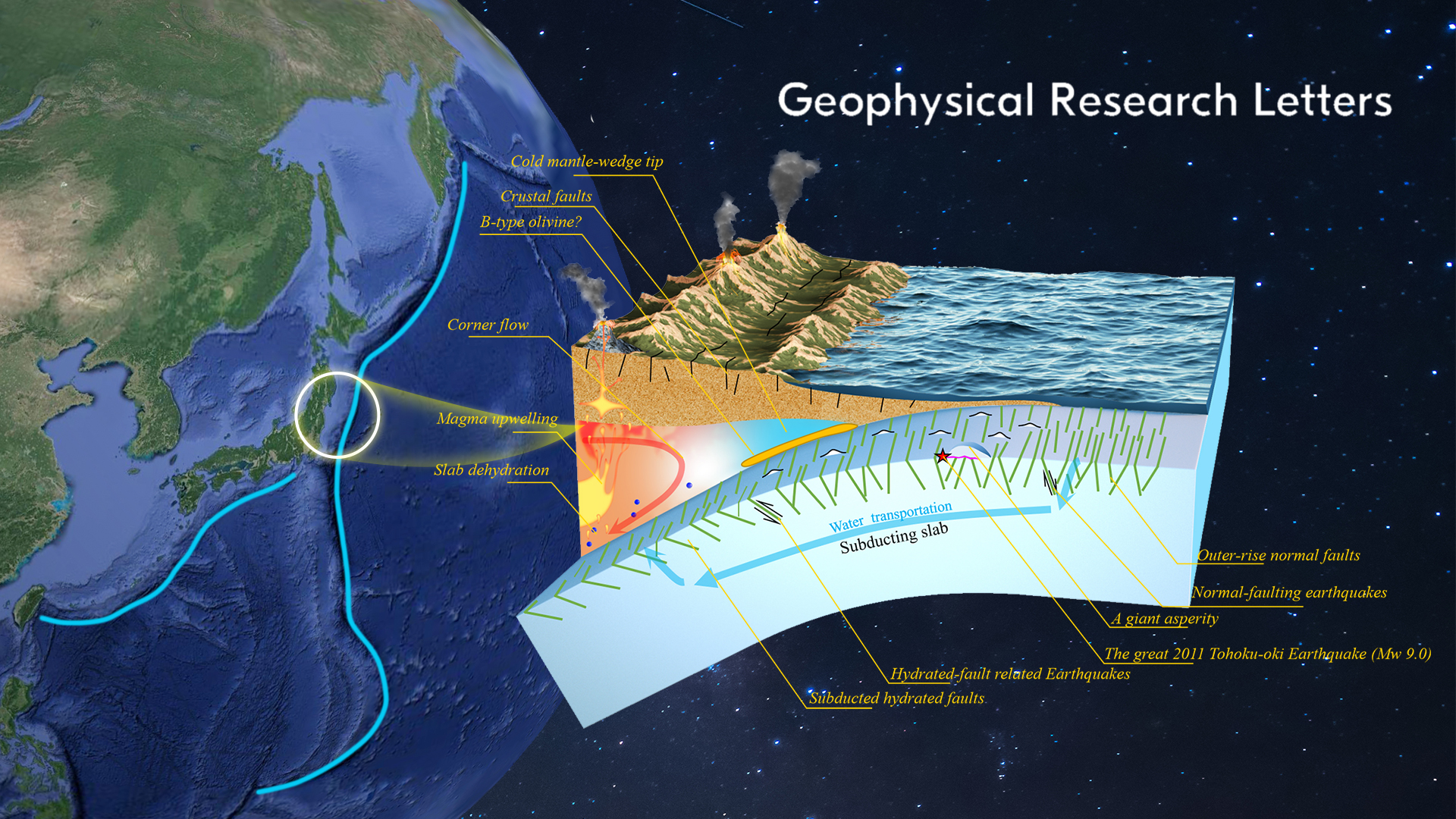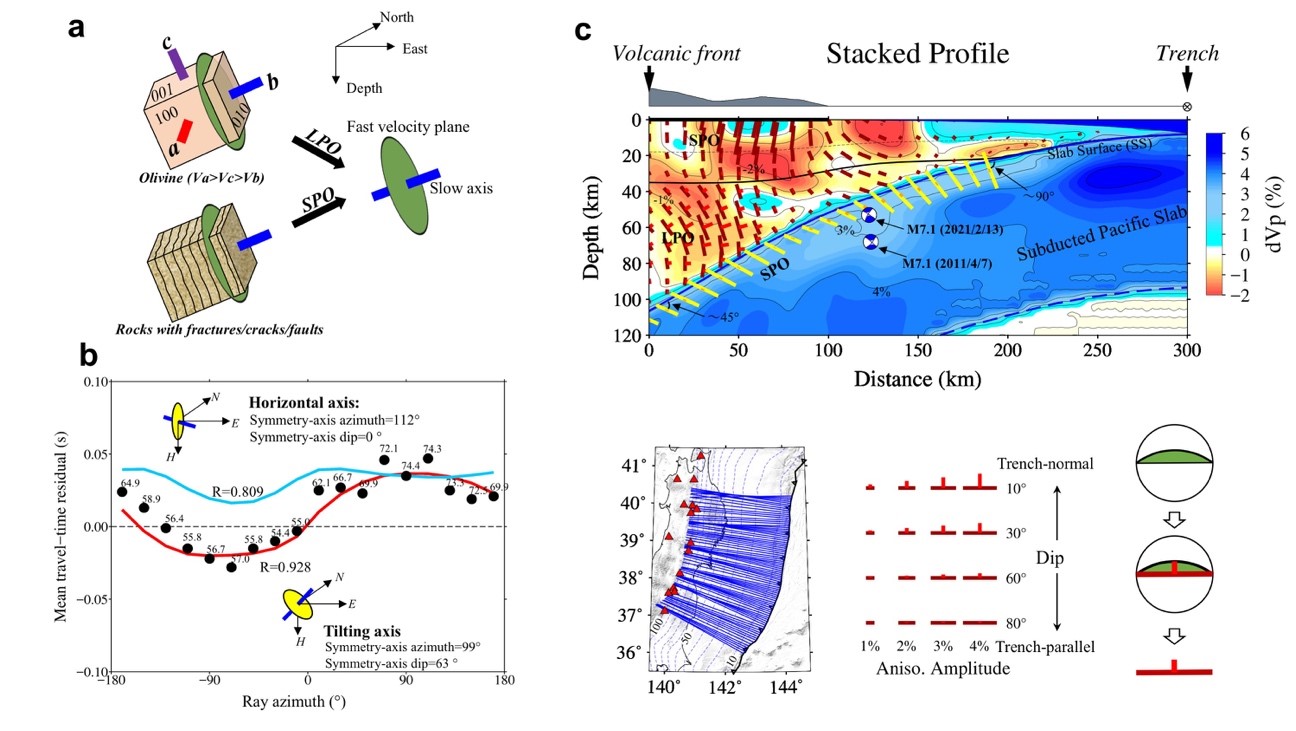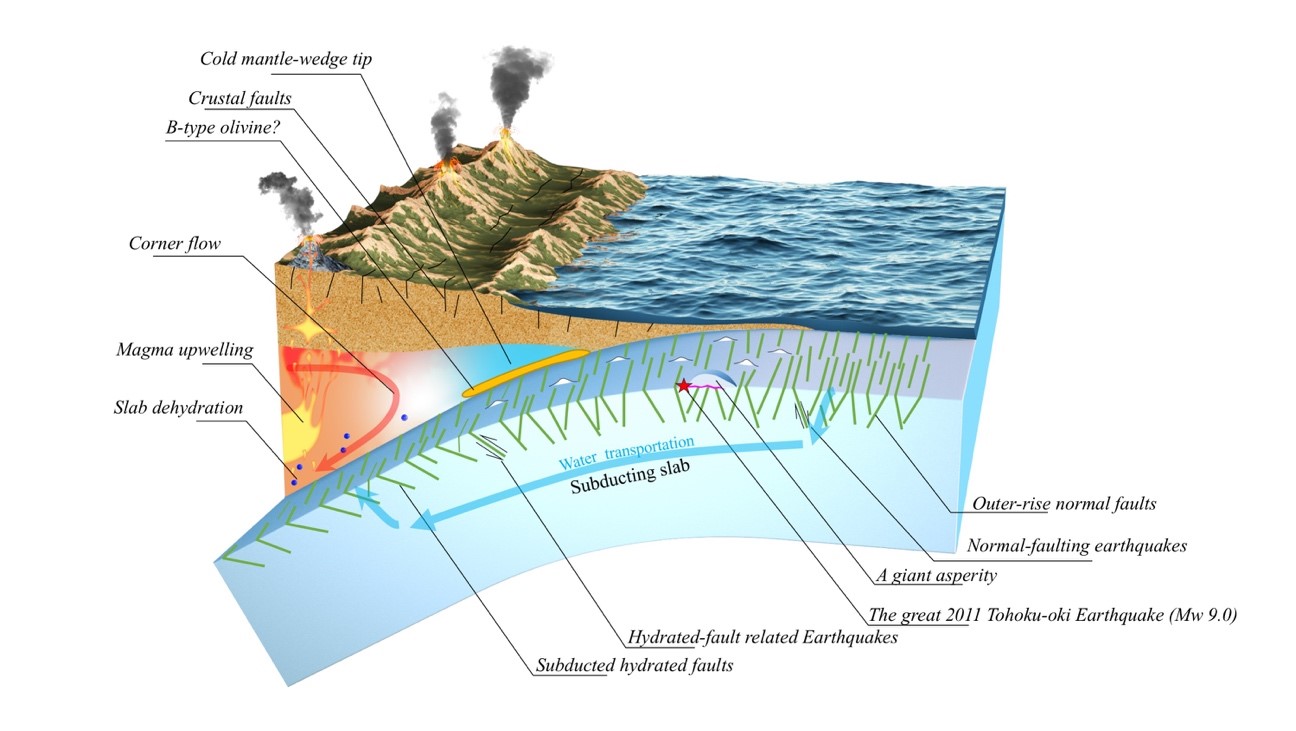Breakthrough in detecting intraslab hydrated faults beneath the forearc
Zewei WANG 2022-03-21
The water cycle in subduction zones is closely related to the generation of large earthquakes and arc magmas, but how the water is carried by the subducting oceanic lithosphere and transported into the mantle is still debated. Intraslab hydrated faults are suspected to support such transportation. However, the geophysical evidence for those faults beneath forearc is scarce.
Professor Xiaofei Chen’s team from the Department of Earth and Space Sciences at the Southern University of Science and Technology (SUSTech) has recently published their findings on an anisotropic tomographic model showing that anisotropy in the forearc segment of the slab is well consistent with the feature caused by the subducted hydrated faults.
Their research, entitled “Seismic anisotropy and intraslab hydrated faults beneath the NE Japan forearc,” was published in Geophysical Research Letters, one of the most impactful and prestigious journals in geophysics.

Widely observed outer-rise normal faults caused by plate bending provide pathways for seawater entering the oceanic lithosphere prior to subduction. The pore space is occupied, and serpentinization occurs when the seawater reaches and reacts with the oceanic mantle through the opening cracks or damage zones of the outer-rise faults. Outer-rise hydrated faults subducting with the oceanic lithosphere are suspected to be important for the water cycle. However, evidence for the faults beneath the forearc is lacking.
The researchers investigated the 3-D anisotropic structure of the Tohoku forearc region by inverting high-quality P-wave arrival time data recorded at 462 onshore network stations and 150 offshore S-net stations. P-wave tilting-axis anisotropic tomography was conducted to reveal both the shape-preferred-orientation and lattice-preferred-orientation that cause seismic anisotropy. They revealed trench-parallel intraslab fast velocity planes of anisotropy that intersect the slab’s upper surface at high angles (∼45°–90°), reflecting aligned hydrated faults in the subducting Pacific slab.
 Figure 1. Anisotropic Vp structure of the Tohoku forearc region
Figure 1. Anisotropic Vp structure of the Tohoku forearc region
 Figure 2. Image depicting hydrated faults in the slab, intraslab earthquakes, and other features in the outer-rise and forearc
Figure 2. Image depicting hydrated faults in the slab, intraslab earthquakes, and other features in the outer-rise and forearc
The results from Prof. Chen’s team indicate ruptures of the hydrated faults may cause large intraslab earthquakes (M~7.1). The hydrated-fault associated water entering a large near-trench asperity in the megathrust zone could have triggered the great 2011 Tohoku-Oki earthquake (Mw 9.0).
Zewei Wang, Research Assistant Professor of Prof. Xiaofei Chen’s team at SUSTech, is the first and corresponding author of this paper. Prof. Chen is the co-author. Prof. Dapeng Zhao from Tohoku University is the co-corresponding author.
This work was supported by the National Natural Science Foundation of China (NSFC), the leading talents of the Guangdong Province program, and the Japan Society for the Promotion of Science (JSPS).
Paper link: https://agupubs.onlinelibrary.wiley.com/doi/10.1029/2021GL097266




